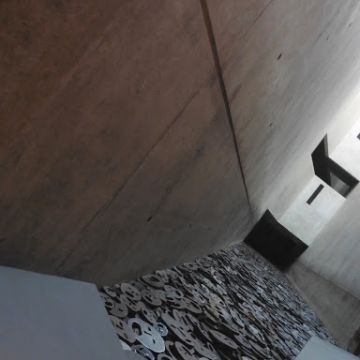
History students experience the culture of Berlin
Published on 06/11/18
.jpg)
Our GCSE and A Level students enjoyed the culture and history of Berlin. Read Mila's (Year 11) and Harry's (Year 13) experience of the trip below.
Day 1
After an early start, having landed in Berlin, we were excited to see the Fernsehturm or Television Tower which had been constructed by the government of the German Democratic Republic and the Molecule Man sculpture on the river Spree, which many of us recognised from our history textbooks. Our tour guide also pointed out the three sections of the Berlin Wall still standing.
After a chance to buy some German food in the Berlin Hauptbahnhof station, we were onto the S-Bahn on our way to the Olympiastadion which was built for the 1936 Olympic games as a propaganda tool, despite the great success of African American athlete Jesse Owens. We were stunned by the sheer size of the stadium, inspired by Ancient Greek architecture with its columns and amphitheatre, especially when entering and seeing the extensive number of seats. We then saw the historic edifice of the German Bundestag or Reichstag building and learnt about its dedication ’to the German people’ in 1916 and it being the seat of the parliament of the Weimar Republic from 1919 to 1933. The ambiguous 1933 fire gave Nazis pretext to suspend rights provided by the Weimar constitution increase police action throughout Germany spreading fear of a communist uprising, eventually resulting in the Enabling Act. We learnt how the building underwent further damaged by air raids as it was a central target for the Red Army during the Battle of Berlin, due to its symbolic significance.
Walking through the autumnal German streets we were all trying to grasp that these were the sites where so many important events took place. We visited the Soviet War memorial in Tiergarten and walked through the Brandenburg gate which had been the border between West and East Berlin for many years. We visited the Memorial to the Murdered Jews of Europe and we saw the site.
undefined
Day 2
After a journey through the former East region of Berlin, we were guided around the Sachsenhausen concentration camp, a deeply sobering experience, as we were able to gain an insight into the horrors that took place there and the 30,000 victims of the Nazi regime who lost their lives at Sachsenhausen. It was a chance to reflect on the implications of what we had learnt in class and empathise with specific people from the masses affected. Being in groups allowed us to discuss our experiences and impressions, helping us to process what we had heard. It is, today, a very peaceful site. We then visited the Wannsee Conference House (now a museum) and learnt in depth about the meeting that took place there to agree the ‘Final Solution.’
We then travelled back to the centre of Berlin to the Topography of Terror exhibition, located where the offices of the principal instruments of Nazi repression once stood. Later, we were fortunate enough to be able to visit the glass dome on the top of the Bundestag building, now a symbol of transparency to the German people. The architecture on the inside was remarkable and the view over the city was beautiful in the darkness.
undefined
Day 3
On the final day, we visited the Jewish Museum. The building had a distinct zigzag formation with a metal façade, angled walls, and bare concrete “voids”. We saw the 'res·o·nant exhibition' filled with light and sound and mainly composed of empty spaces. It was a very powerful and of the kind many of us had not yet experienced. We learnt that the architect Daniel Libeskind aimed to design a museum building that would recount German-Jewish history. The building allowed for many different interpretations, one being the feeling of insecurity that the spaces evoke - this is a physical connection to history. The voids address the physical emptiness that resulted from the destruction of Jewish life. The Garden of Exile gave a spatial experience that conveyed unsteadiness and disorientation with its slanted grounds, it aimed to show the disorientation felt by people forced out of Germany. One of the most powerful experiences was the Holocaust Tower. The only daylight visible was through a narrow slit in the concrete, noises were muffled by the walls, a ladder could be seen on one of the walls but far too high up to reach. We then travelled to a The Stasi Prison, Hohenschönhausen where we learnt about Stasi in East Germany and methods and purpose of interrogation. On our way back to the hostel we able to do some well deserved souvenir shopping.
Both GCSE and A Level Historians greatly enjoyed the culturally and historically enriching experience of visiting Berlin. Thanks must go to Mrs Sefton, Miss Chow and Mrs Paris and in particular to Mrs Stanley who organised and led the trip.
By Mila R & Harry R
For upcoming events and trips, take a look at our school calendar.

.jpg)
.jpg)
.jpg)
.jpg)
.jpg)
.jpg)
.jpg)